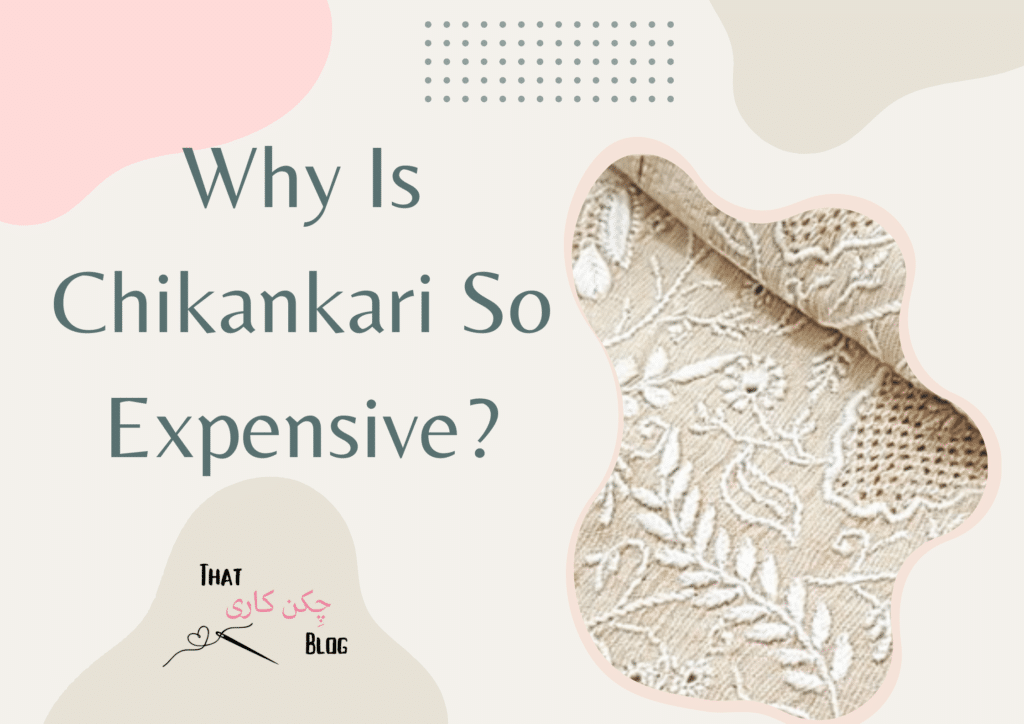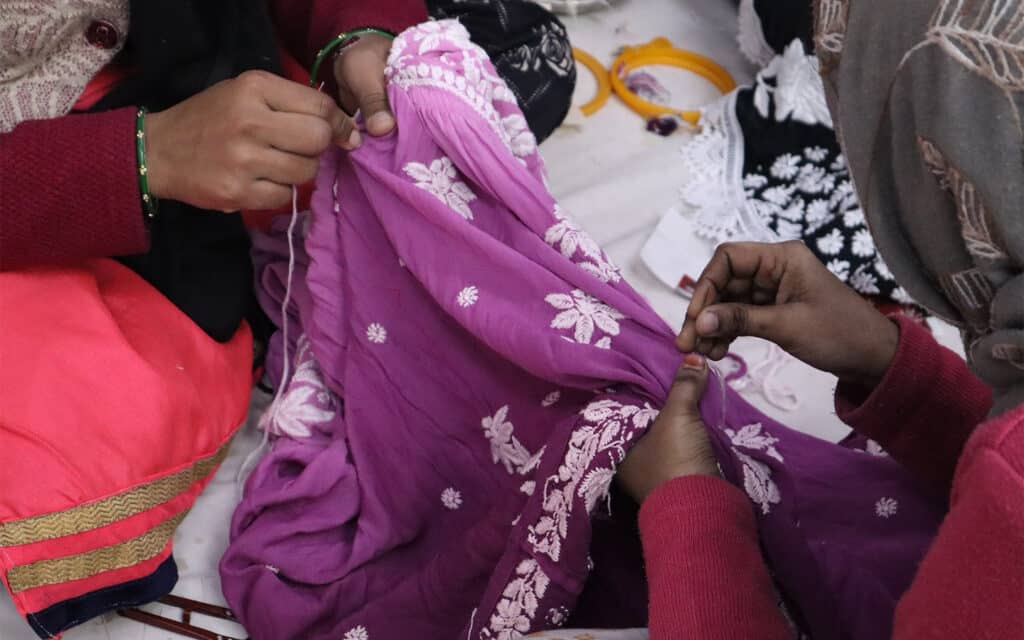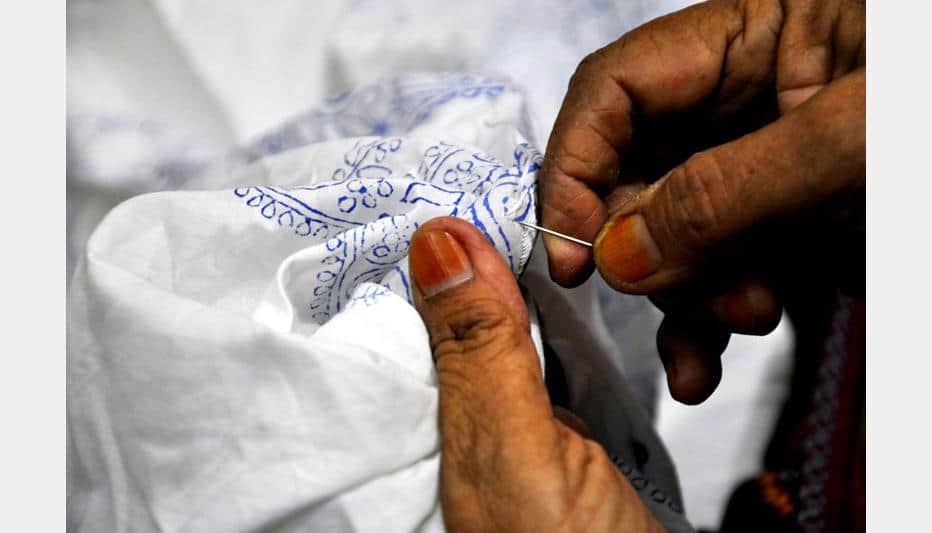As I grew up, I loved how chikankari was done. So I went to a lot of shops to get different designs and colors. If you’re also a fan of chikankari, you would know that machine embroidery is cheaper than hand-embroidered kurtas and sarees. Well, it goes without saying that handwork also demands a lot of hard work, patience, and workers.

They, too, deserve to be remunerated for the sweat they have put into it, and even the machine work requires hard work.
This thought came to my mind when one lady standing next to me questioned, “I don’t understand why such a hefty tag when you can make it cheaper and accessible to all.” But let me tell you, after reading this report, you won’t ask yourself or others why is chikankari so expensive because I’ll tell you how it is made available to you.
About the Story | Why Is Chikankari So Expensive?
So, I was with a friend buying her a chikan saree when a lady came to the shop and was looking for some ‘hand-embroidered kurta for her.’ After an hour of picking, choosing, and asking for more designs, she selected one kurta, but what annoyed me was how she reacted when the shopkeeper told her the price.
In anger, she shouted, “2500?? How can you ask for such a big amount? It’s just a kurta, and you expect me to pay 2500 bucks for this? No way!” The shopkeeper replied, “You only asked for a hand-embroidered kurta, which is expensive.” After so much chaos, she left, saying she wouldn’t spend so much on “just a kurta.”
I felt terrible, not because her behavior with the shopkeeper was rude but because she disrespected the hours-long hard work of the karigars who created it with love and passion. So let’s see exactly why chikankari is so expensive yet the most wished everyday wear style in India and abroad.

The Birth Of An Idea
The idea of making a chikankari dress starts with selecting the right cloth material. I have seen many manufacturers carefully selecting cloths as they believe fabric plays a crucial role in everything. They don’t just pick any fabric for it but select the most suitable one that could make the embroidery look even better.
Now comes the design. Some karigars select the design based on the variety of blocks they have. They take wooden blocks and carve designs on them using ink to apply to the fabric. They have blocks with butis, flowers, and a lot more designs. While some karigars use their imagination to create the best design by using simple dhaga (thread).
After the basic things are all set, they start by cutting the fabric into dresses. They decide whether to make a saree or a kurta, etc., and later cut and sew the fabric. Once the fabric is stitched into a shape, they use the chapa technique, which is to dip the blocks into ink and dab on the cloth to create the design.
Now, the karigars are given dresses with designs to start the chikankari embroidery. They start with Bakhiya, Ulta Dhaga, Phanda, Pechni, Murri, Tepchi, Jaali, and Keel Kangan, which are the varieties of embroidery. After the chikankari is completed, they finally wash the clothes to remove any ink stains and stiffness, as in the case of cotton fabric.
Why Is Chikankari So Expensive In Lucknow?
Lucknow is the Chikankari hub. The best kind of chikankari can be found in every nook and corner of the city. You will find numerous designs, colors, fabrics, etc, almost everywhere. Some of them are expensive, while some of them are cheap. But why do people go for the expensive ones? Tells a story of its own.

You see how much labor is required to make a chikankari dress. From fabric to washing, it takes a lot of effort, and it’s definitely not created in a day. It also takes almost a week to make one genuine hand-embroidered chikankari kurta. Thus, the makers deserve a good amount for their labor.
While you might think it’s because of the hard work, chikankari is expensive. Well, there’s another reason. While the machine-embroidered kurta takes less time and is almost identical to handwork, it doesn’t look that good. One can easily tell by its backside that it’s not hand embroidered. It is also said that the machine work gets easily damaged. The threads get broken, and the design doesn’t look the same after 2-3 washes.
Although the stitches look perfect, the designs and needlework done by karigars cannot be replicated by any machine. Therefore, people prefer spending extra money to get an authentic chikankari kurta.

Final Thoughts
Well, if you ever visit Lucknow, do yourself a favor and check out some hand-embroidered chikankari kurtas. You can get thousands of shops saying they sell original hand-picked kurtas, but always look for hand-embroidered ones.
Now, you might wonder how to find one, so worry not just turn the kurta and see if the embroidery is perfect and has no threads hanging out, it is not hand embroidered. While hand embroidered ones have little imperfections like uneven-sized threads, and roughness.
So, next time you visit the city of Nawabs, make sure you wear a hand-embroidered chikankari kurta or saree and enjoy their cuisine, too, because, just like their dresses, their food is to die for!
